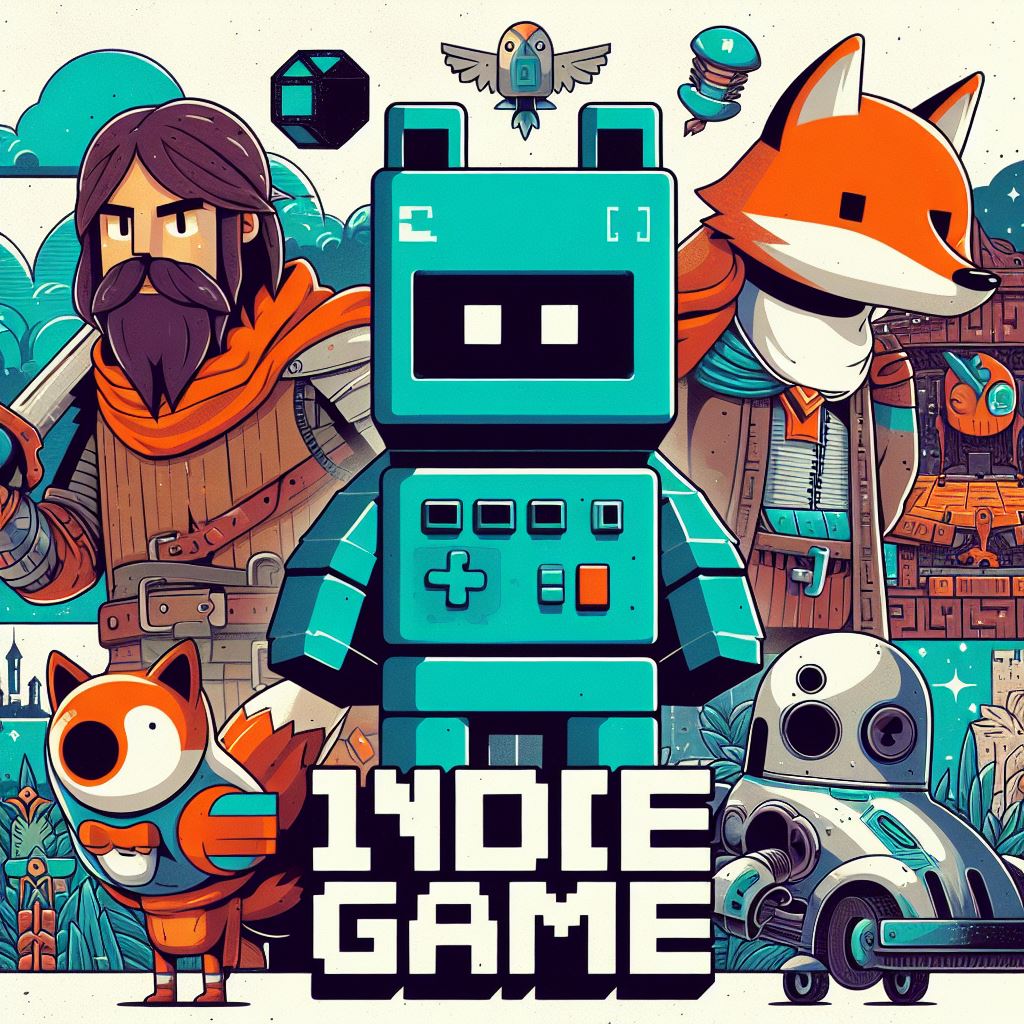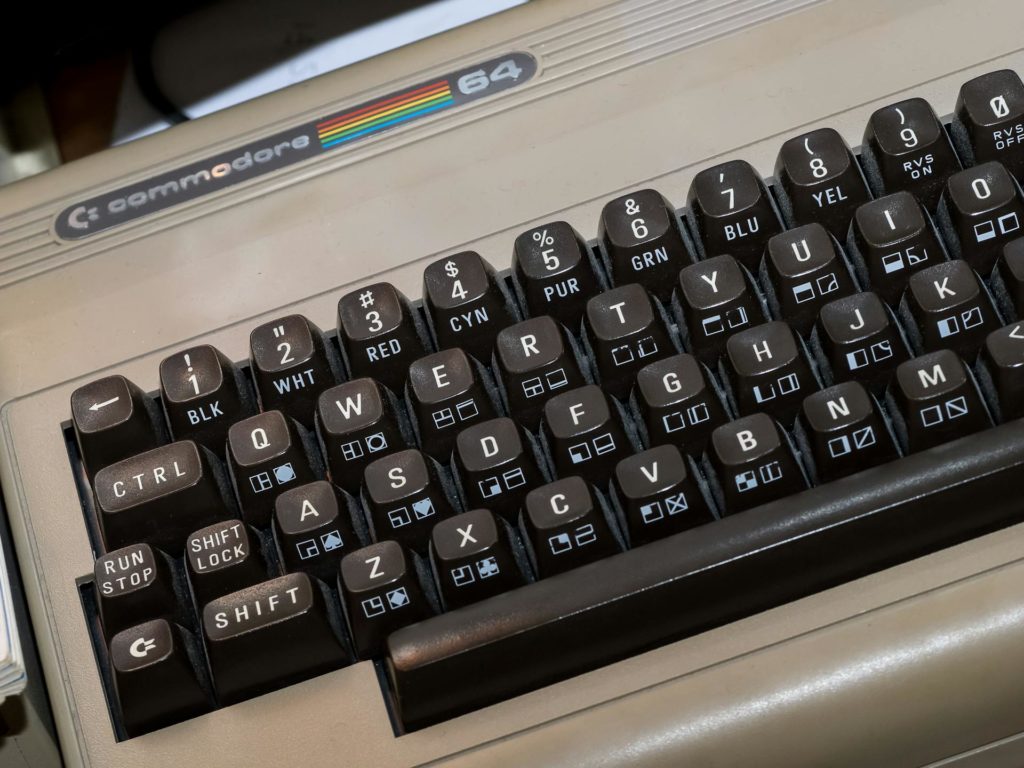
Hello friends, welcome back for another blog post in Game On Reviews, your favorite blog for everything related to indie games. This time, as promised, we’re trying to diversify the content of the blog and not focus exclusively on indie game reviews, since I would like to immerse ourselves in the fascinating world of indie games.
But to start, what the heck is an indie game? Well, like many other forms of art and media, indie stands for independent, meaning that the developers or developing companies don’t work with established AAA gaming companies.
Usually in the indie games world, developers might work by themselves or on a small company, although “small” is a relative definition, but basically smaller in people employed and smaller budget than a traditional gaming company.
Genesis of Indie Games (1980s-1990s)
It is disputed what constitutes the very first video game. We can trace the history of video games as far back as the 1940’s, a time where computers themselves startet to develop (although this can also be disputed, since early computers can be traced all the way back to the 1800’s). But we can all agree that the period when video games become more common in homes is in the 1980’s.
The 8 bit era can be considered as the time when video games exploded with popularity and everyone wanted the brand new Nintendo console for christmas. Is in this time when many wanted a piece of the cake, and multiple consoles started to pop up. Computers were entering the home market and new graphical chips were being developed. Computers like Commodore 64, Amiga IBM came up with consoles that were able to reproduce 8 bit graphics.
These consoles, or computers, provided aspiring developers with the necessary hardware to create games from their homes. Pioneering game development tools, like BASIC programming language and early game creation software, enabled enthusiasts to experiment with game design and programming.
The do-it-yourself spirit prevalent in the hacker and hobbyist communities encouraged people to explore game development as a creative medium, often sharing their creations through bulletin board systems (BBS) and early internet forums. The popularity of shareware and freeware distribution models allowed developers to distribute their games independently, often relying on word-of-mouth promotion and grassroots marketing efforts.

The Rise of Indie Games in the New Millennium
Now, entering the 2000s, digital distribution platforms, such as Steam, Xbox Live Arcade, PlayStation Network, and later platforms like itch.io and Humble Bundle, provided indie developers with accessible channels to distribute and sell their games directly to consumers without the need for physical distribution or publisher support.
Digital distribution platforms facilitated the adoption of flexible pricing models, including pay-what-you-want, discounted bundles, and frequent sales. This allowed indie developers to experiment with pricing strategies and reach different segments of the market while maintaining control over their game’s pricing and revenue.
These platforms created vibrant communities around indie games, enabling developers to interact directly with players through forums, social media, and live streaming platforms. This direct line of communication facilitated feedback, support, and collaboration between developers and players, further fueling the growth of the indie game scene and helped developers know better what fans wanted.
There was one game that popularized the concept of indie games and is a prominent example due to its immense success and cultural impact. One earlier indie game that played a significant role in popularizing indie games is “Braid,” developed by Jonathan Blow and released in 2008.
Braid is a puzzle-platformer known for its innovative time-manipulation mechanics, intricate level design, and philosophical narrative. It garnered widespread critical acclaim for its thought-provoking gameplay and artistic merit, receiving numerous awards and nominations.
The game demonstrated that indie games could offer innovative gameplay experiences and meaningful storytelling on par with mainstream titles. Its success helped raise the profile of indie games within the gaming industry and drew attention to the creative potential of independent game developers.
The Indie Renaissance: Pioneering the 2010s Indie Boom
The indie boom of the 2010s was characterized by a proliferation of indie game development tools and engines, which revolutionized the way games were created and contributed to the democratization of game development. Indie game development tools and engines became more accessible than ever before, allowing developers with varying levels of experience to create games.
Platforms like Unity and Unreal Engine offered user-friendly interfaces, extensive documentation, and robust community support, lowering the barrier to entry for aspiring developers. Many indie game development tools and engines adopted affordable pricing models, including free versions with limited features and affordable subscription plans.
This made high-quality game development software accessible to developers with limited budgets, democratizing the tools of game creation. The accessibility and versatility of indie game development tools and engines fueled a wave of innovation in game design and mechanics. Developers experimented with new gameplay concepts, art styles, and narrative approaches, pushing the boundaries of what was possible in indie game development.
Indie games pushed the boundaries of storytelling and narrative design, exploring complex themes and emotional experiences often overlooked in mainstream games. Games like Gone Home, Undertale, and Night in the Woods prioritized narrative depth and player agency, resonating with players through compelling characters, rich world-building, and thought-provoking storytelling.
Navigating Challenges and Controversies in the Indie Game Landscape
Indie developers often face challenges in securing adequate funding for their projects. Without the financial backing of a large publisher, indie developers may rely on personal savings, crowdfunding campaigns, or grants to fund their games. Some even rely on using ads on their games, disrupting the fluidity and pace of gameplay and even some games don’t ever reach profitability.
With thousands of games being released each year, visibility is another major challenge for indie developers. Breaking through the noise and getting their game noticed by players can be difficult, requiring effective marketing strategies, community engagement, and sometimes luck.
There is ongoing debate within the gaming community about what constitutes an “indie game.” Some define indie games based on the size of the development team or the absence of publisher involvement, while others focus on factors like creative freedom, artistic expression, or financial independence. The definition of indie games can be subjective and fluid, leading to disagreements and differing interpretations among developers, players, and industry professionals.
Indie game companies also face acquisition by larger companies. Corporate acquisitions of indie studios can have both positive and negative impacts. On one hand, acquisition by a larger company can provide indie studios with financial stability, access to resources, and opportunities for growth.
However, there are concerns about the potential loss of creative autonomy and the dilution of indie studio culture following an acquisition. Some fear that corporate influence may compromise the artistic integrity and innovation that are often associated with indie games.
With the continuous evolution of technology, new platforms are emerging, such as cloud gaming services, mobile devices, and virtual reality platforms. Indie developers are likely to explore these platforms to reach wider audiences and experiment with new gameplay experiences.
With the rise of cross-platform gaming and cross-play functionality, indie developers are exploring opportunities to create games that can be played seamlessly across different platforms and devices. This not only expands the potential audience for indie games but also fosters a more interconnected gaming community.

Indie developers are increasingly leveraging community engagement and co-creation strategies to involve players in the game development process. This includes early access programs, player feedback channels, modding support, and user-generated content tools, empowering players to shape the direction and content of indie games.
In conclusion, the history of indie games is a testament to the power of creativity, innovation, and community within the gaming industry. From the early days of DIY development to the modern era of digital distribution and global connectivity, indie developers have continually pushed the boundaries of game design, storytelling, and player engagement.
Through perseverance, passion, and a commitment to artistic freedom, indie games have evolved from niche projects to influential cultural phenomena, challenging conventions, and inspiring players worldwide.
Looking ahead, the future of indie games appears bright, with emerging technologies, evolving platforms, and a growing emphasis on inclusivity, sustainability, and community engagement shaping the landscape. As indie developers continue to push the boundaries of what’s possible in game development, we can expect to see even more groundbreaking experiences that challenge, inspire, and delight players for years to come.
In the end, indie games remind us that the true magic of gaming lies not in the size of the budget or the scale of the production, but in the passion, creativity, and imagination of the people behind the games. As players, developers, and enthusiasts, let us celebrate the spirit of indie games and embrace the endless possibilities they offer for exploration, discovery, and joy.
If you want to check out the game Braid, click here!